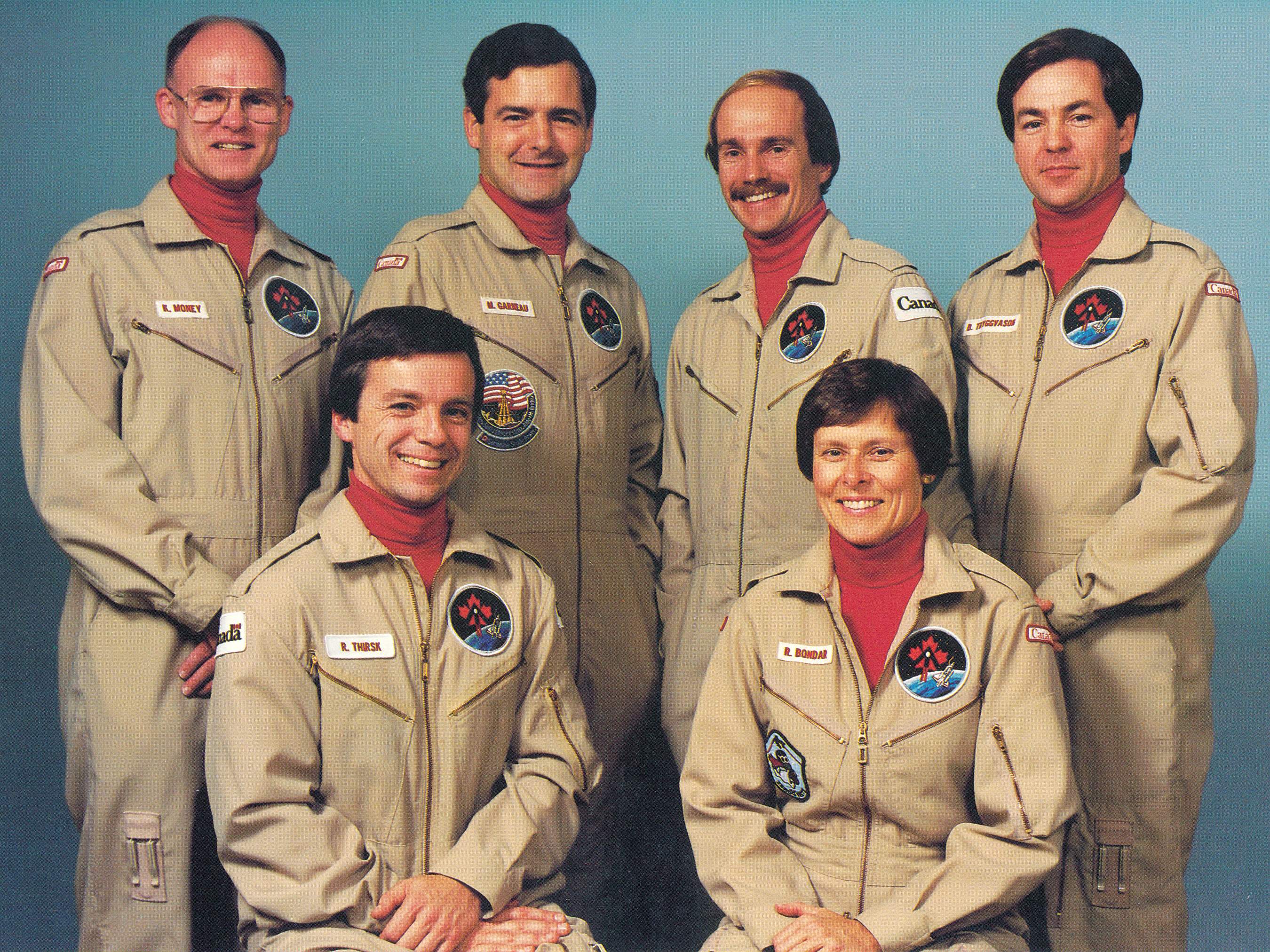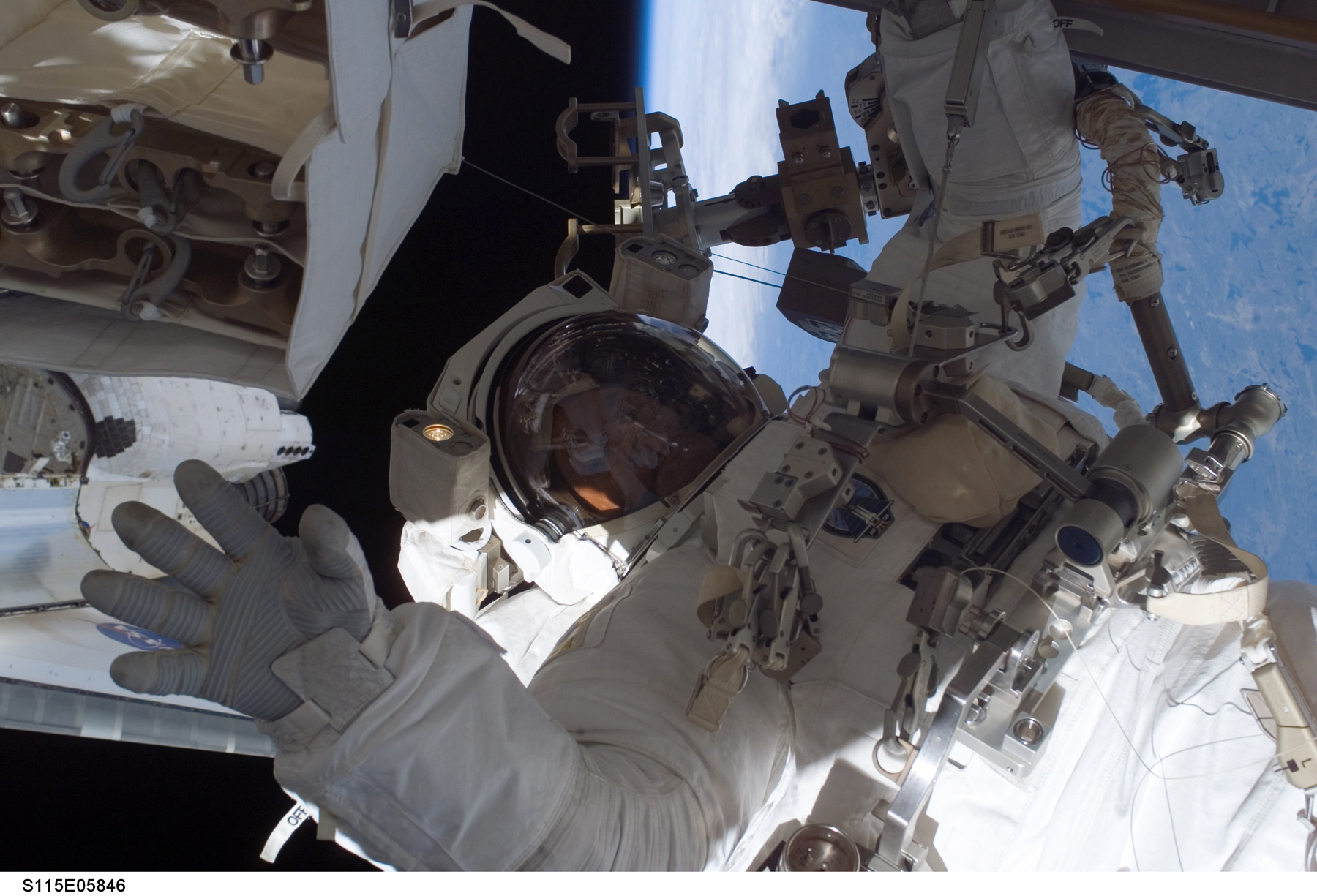Kenneth Eric Money, astronaut, air force pilot, physiologist, inventor, lecturer, author, Olympic athlete (born 4 January 1935 in Toronto, ON; died 6 March 2023 in Toronto, ON). Dr. Ken Money was one of the original six Canadians selected to join the Canadian astronaut corps in 1983 (see Canadian Space Agency). He was a pioneer in the study of the effects of space travel on the human body. He published many scientific articles and made contributions to the World Book Encyclopedia. In addition to his extensive research contributions, Money distinguished himself as an athlete and competed in the 1956 Summer Olympics.

Early Life and Education
Ken Money’s parents were divorced and he was raised by his mother. His maternal grandfather, William Bate, was a role model who had a strong influence on him. Money attended Whitney Public School in Toronto and North Toronto Collegiate Institute. When his family moved to Noranda, Quebec, he attended Noranda School. Money returned to Toronto and enrolled at the University of Toronto where he earned a Bachelor of Science in chemistry and physiology in 1958, a Master of Science in physiology in 1959 and a PhD in physiology in 1961. (See also Biology.)
Athletics and the Olympics
Ken Money competed in intercollegiate sports for the University of Toronto Varsity Blues from 1954 to 1959, winning two gold medals for swimming and four for the high jump in track and field (see University of Toronto). In 1955, he received the Hec Phillips Trophy, awarded to an outstanding athlete at the annual Ontario University Athletics track meet.
Money represented Canada at the 1956 Summer Olympics in Melbourne, Australia. He placed fifth with a high jump of 2.03 m, just 0.05 m below that of gold medal winner Charles Everett Dumas of the United States. Money was also a world-class badminton player, competing at both the national and international levels. He won Masters titles (US, 1986, 1989) and continued to compete in the sport in the over-60 category, winning the US tournament in 1999.
Air Force Pilot
While Ken Money was still at the University of Toronto, he began his pilot training and joined the Royal Canadian Air Force Reserve. (See also Canadian Armed Forces; Royal Canadian Air Force; Reserve Force of Canada.) He graduated from the National Defence College in 1972. Money learned to fly numerous types of aircraft, including fighter jets, helicopters and bush planes (see Bush Flying in Canada). On two occasions he flew float-equipped planes in search and rescue missions in the northern Canadian wilderness. He was skilled at acrobatic flying and in 1989 successfully completed the Accelerated Free Fall Skydiving course at the Spaceland Parachute Center in Houston, Texas.
Department of National Defence and NASA
In 1961, Ken Money went to work for a branch of the Department of National Defence called the Defence and Civil Institute of Environmental Medicine (DCIEM) — now known as Defence Research and Development Canada (DRDC). He became an internationally recognized expert on the vestibular system, the part of the inner ear that enables the body to maintain its sense of balance while in motion. Because 60 to 80 per cent of astronauts experience motion sickness in microgravity, and pilots can experience spatial disorientation in flight, Money’s work drew the attention of the National Aeronautics and Space Administration (NASA) in the United States. NASA had to make a special arrangement to employ Money because it was not allowed to hire foreign nationals who worked for their own country’s national defence.
Money did groundbreaking work in his mission to comprehend and alleviate the effects of space flight on the human body. He invented an experimental surgical procedure called semicircular canal plugging to treat a specific type of dizziness. He investigated the intricacies of motion sickness and pilot disorientation, as well as the effects of alcohol in space. His work produced more than 100 scientific papers. As well as working as a scientific advisor to NASA, he frequently partnered with the European Space Agency (ESA).
Did you know?
Money was a co-investigator on a series of scientific experiments on six Space Shuttle missions.
Canadian Astronaut
In December 1983, along with Marc Garneau, Steve MacLean, Bjarni Tryggvason, Roberta Bondar and Robert Thirsk, Ken Money was chosen from among more than 4,000 applicants to be a member of Canada’s original astronaut corps, called Canada Group 1 — which in 1989 would become part of the Canadian Space Agency (CSA). He began his astronaut training in February 1984 and later that year initiated medical experiments performed aboard mission STS-41G. During this mission, Marc Garneau became the first Canadian in space.

In 1990, Money was the designated alternate payload specialist (backup for Roberta Bondar) for the first International Microgravity Laboratory mission (IML-1) on the Space Shuttle Discovery flight STS-42. When Roberta Bondar and the crew of STS-42 launched in 1992, Money coordinated communications between the flight crew and the ground support team at NASA’s Marshall Space Flight Center in Huntsville, Alabama. Money also helped formulate many space physiology experiments for the Spacelab IML-1 mission to explore the causes of space sickness. Although Money was thoroughly trained for space flight, of the six original Canadian astronauts, he was the only one who never went into space. However, his contributions were vital to the success of the missions in which he participated. In a 2023 article for The Globe and Mail Roberta Bondar is quoted as saying, “Although he wasn’t up in space, he was as good as.”
Later Career
Ken Money retired from the CSA in 1992. He became a part-time professor of physiology at the University of Toronto and took a course to improve his teaching skills. He also taught at York University and lectured at other universities across Canada, the United States, as well as in the United Kingdom, Italy, France and Japan. He was a volunteer on the board of the National Space Society in Washington, was a corporate director of Interquest Incorporated of Toronto, and was on the science advisory board of Lifetech Corporation, also in Toronto. Money resumed his research work at DCIEM, retiring in 1994 as a senior scientist.
Personal Life
In 1958, Money married nursing professor Sheila Mary Donnelly, with whom he would have one child.
Awards and Honours
- Rupert Turnbull lecturer, Canadian Aeronautics and Space Institute (1981)
- Academician, International Academy of Astronautics (1984)
- Fellow, Aerospace Medical Association (1985)
- Wilbur R. Franks Award, Canadian Society of Aviation Medicine (1986)
- Grass Foundation Neurosciences Lectureship, Pennsylvania State University (1989)
- Wellmark Lecturer, Canadian Association for Clinical Microbiology and Infectious Diseases (1992)
- Inductee, University of Toronto Sports Hall of Fame (1992)
- Meritorious Service Cross — Civil Division (1994)
- Inductee, CAF Sports Hall of Fame (1994)
- Kent Gillingham Award, Aerospace Medical Society (2000)

 Share on Facebook
Share on Facebook Share on X
Share on X Share by Email
Share by Email Share on Google Classroom
Share on Google Classroom














